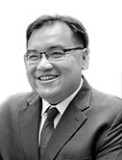Summary: In a world of changing healthcare ideals, all that is required is a change in our mindset.
Transformation is accelerating in healthcare, and this is particularly true with regards to healthcare in Singapore. It has been ranked the longest for life expectancy at birth (Global Burden of Disease Study 2017) as well as second for healthcare efficiency (Bloomberg’s Healthcare Efficiency Index 2018). So why change a healthcare system that appears not to be broken?
Challenges such as a fast-ageing population, the rising burden of chronic diseases, emerging infectious diseases and the increasing cost of healthcare can pose a threat to even the most effective healthcare systems. If we are to respond effectively to these challenges, our mindsets need to shift, as well as our perspectives on our healthcare models, workforce and organisational culture.
To keep up, we must keep innovating, and a systems-based approach will be the key to transforming healthcare and sustaining it in a future of changing ideals. To scale and maintain innovation, we must first innovate innovation itself by integrating care redesigns, enabling technologies and job redesigns.
Case-Study: Smart Hospital of the Future
The development of the future smart hospital in Singapore has been ten years in the making. This has involved a total redesign with a focus on building a system of systems, with an emphasis on autonomy and decision-making. By using a combination of technologies, Tan Tock Seng Hospital in Singapore has been able to optimise the patient journey and deliver the best care, in real time for every patient.
The Command, Control and Communications or C3 Smart Hospital System has been at the core of the hospital’s innovation. Much like the brain of the hospital, the C3 system operates like an airport control tower. It displays bed resources in a patient flow concept from admission to discharge with live locations of every patient. The visualisation of flow has meant patient care can be optimised by giving a coherent picture of what is happening throughout the hospital and highlighting any choke points which need to be addressed. The built-in standard operating procedures of the C3 system also allows responses to be coordinated across departments with closer monitoring.
But what does the future hold for the smart hospital? The next step involves an increased number of sensors to further monitor and coordinate actions. Additionally, the hospital aims to automate decision-making by 80%, leaving the remaining 20% of more complex decisions for staff to address with real-time decision support. The C3 system has been proven to not only benefit hospital operations, and has the ambition to go national by scaling the system across all hospitals in Singapore’s Public Healthcare System, and upstream to pre-hospital care and downstream to transitional and community care.
Redesigning Care
How we manage and integrate health and social care is an increasingly important consideration for any health system. The future hospital is one without walls, where care follows the patient and is responsible for the health of the population it serves. Hospitals will operate in a complex adaptive system. Care will increase in complexity due to an ageing population and rising chronic disease burden. The ultimate aim for Singapore is to shift care beyond the hospital into community, with a focus on health and on what our population and patients value. This will be key for the longer-term sustainability of the healthcare system.
Managing Complexity in Care
Hospitals often take a linear approach to healthcare, whereas care beyond the hospital extends into a complex adaptive system. New care models will range form value-based ones at the hospitals to relationship-based ones in the community. How we intervene in a complex adaptive system will be vital for us to change the health ecosystem and influence how we care for our patients.
If we are to better manage chronic diseases, changing our mindset and behaviours can be the magic needed to alter our current perspectives. For example, if we compare managing chronic diseases to throwing a bird, no matter how hard you throw it, the bird will not go in your desired direction. However, if you place a bowl of bird seeds at the target, it will. That is how we should be looking at treating chronic diseases; it is all about changing mindsets from sick care to health care.
Integrating Health and Social Care
Access to healthcare contributes only 10% to what makes us healthy. It is well established that the social determinants of health play an important role in shaping the health of our population. Singapore has done well and was recently ranked first towards the United Nation’s Health-related sustainable development goals (The Lancet 2018). However, with an ageing population, new social drivers of health present themselves. These include frailty, social isolation, disability and dementia. These are increasingly the main drivers of healthcare utilisation, longer lengths of stay and readmissions. Our intentions should be helping our seniors to engage in ‘active ageing’ with the support of community healthcare workers. This is why we need to move to a health and social care model where healthcare becomes an ‘activation shop’ rather than a repair shop.
Enabling Technologies
In addition to redesigning care, if we are to innovate healthcare systems, we must harness new technologies. To enable healthcare through technologies, it is important to understand that there is a paradox. It is less about the technologies themselves as it is about the solutions to engineer future care and sustainable business models. We can think of the continuum from smart hospitals to smart homes, and ultimately smart systems to join up care.
We operate with incredibly complex IT systems. Massive technological changes are abounding in healthcare. The traditional IT stack focuses on building on hardware, dataware, middleware and applications. This is slow and less agile, leading to long timelines and high costs.
Singapore has taken an innovative approach and now treats IT as a service with a digital stack for its citizens. This stack builds on information, transactions, life moments and persons. This enables a citizen-centric approach to stacking technologies in a scalable and meaningful way. We can also adopt this approach in healthcare where transactions in our electronic medical records (EMR), can be stacked to patient journeys and then to patients. This will also enable a big data approach to stacking IT for population health beyond the hospital. Ultimately, this is about our relationships with our patients. When we look at a population health cycle, we see the importance of combining health and social data. This is intended to allow early interventions and risk management rather than wait until an emergency occurs.
When facilitating technologies, it is essential to consider the smart hospital of the future and look at it from a holistic perspective. A smart hospital takes on a human persona with a brain, body and functions. Currently, when we talk about smart healthcare, we are generally focused on the devices and tasks. We should, instead, be thinking of a hospital as a smart ecosystem. When we look at the “brain” of the hospital, this can be thought of as our hospital operations or command centre where our staff are supported in caring for patients through system optimisation and analytics. This is empowered by the body of the hospital which includes the core “backbone” systems like the EMR and administrative systems. Hospital sensors that monitor people, processes, infrastructure are much like the biggest organ of the body – our "skin;" closely monitoring our resources and clinical care. Ultimately, smart applications, devices and robots much like our “limbs” help to deliver the tasks and functions on the ground.
An essential tool for stacking technologies in implementing a smart hospital is technology road-mapping. This can take two approaches. First, mapping the use of technologies to a patient’s journey from hospital to home. In this way, we can demonstrate the total value for the patient including health outcomes and cost sustainability. Technology road-mapping also extends the patient journey beyond the hospital. For example, explaining how rehabilitative robots can be used outside of the hospital, in patients’ homes; at Tan Tock Seng Hospital, we are developing robots that will follow our patients home and stay with them during their recovery. This completes the value proposition for our patients in their rehabilitation journey back to health.
Another approach is technology and business operations road-mapping, which comprises business planning across strategy, design and technology, during its development. Often technologies are stuck in proof of concepts and never-ending pilots. Having a business operations roadmap ensures alignment, adoption and scalability that is aligned with business objectives.
Job Redesign
Job redesign is to ensure that everyone in the workforce has better jobs and meaningful roles ready for tomorrow’s healthcare. Workforce transformation through job redesign is the key to longer term scalability and sustainability in healthcare. Without this, staff will continue to do the same job rendering any new care model or technology void. Our aims are to redesign jobs to deliver higher value for patients, and to design jobs that our workforce values.
Individual roles are redesigned for future care, while optimising a team-based model of care. Job redesign empowers staff to redesign their work to practice at the top of their licenses.
Tan Tock Seng Hospital has a few ongoing strategies which focus on job redesign and strategies which look at how roles can be added with more value. Staff have access to a handbook on tools to facilitate job redesign and the hospital recently rolled out a micro-learning platform to allow any staff to learn bite-size anywhere anytime on their mobile phones. Staff are encouraged to redesign their roles with more value-adding skills and empowered to go beyond competencies to develop capabilities to learn, unlearn and relearn. These capabilities include tools for improvement, innovation and engagement. Nursing which makes up the majority of the workforce in healthcare is redesigning jobs where nurses go beyond nursing and nursing goes beyond nurses. In moving care to the community, traditional multi-disciplinary care is not sustainable; instead care has to be delivered in inter-professional teams and delivered by staff that are transdisciplinary in their training. This makes care sustainable and relationship-based.
It is important to engage staff on what staff value in their jobs in order to understand the ‘stay and strive’ factors for our workforce. There are three factors that are universal in healthcare: meaningful work, meaningful relationships, and opportunities to learn and grow. We must bring teams together and let them design their care and jobs for the future.
Many hospitals are focused on organisational excellence. It is imperative that if we are to achieve excellence, we need to also focus on the deeper learning cycle of our organisations that promotes organisational health. The health of our organisation enables our capacity for change. It focuses on our people and what is of value to them, whereas organisational excellence focuses on the systems and the value we deliver for our patients. Organisational health enables a workforce culture that embraces innovation and is future-ready.
The first ingredient for shifting our workforce culture in an organisation is relationships. This is not just about role-modelling as in traditional clinical leadership models, but developing collective leadership more than leaders, and leadership at all levels of our organisation. It is about engagement, teaming and networking to build relationships and trust in our people and partners.
Another ingredient is about shifting learning from traditional courses to social learning, where learning is in communities of practice and across domains and departments. The last ingredient is renewal. This gives our people the capabilities and tools to do our jobs well, better and differently in order to address future needs.
The key to building a hospital for the future is to create one without walls, in the sense that innovation should be driven by relationships, co-learning and renewal. After all, it is the better people that deliver the better care and build a better community.
Key Points
- The Singapore healthcare system ranks highly in the world for its healthcare quality and efficiency.
- The smart hospital of the future is at the core of its healthcare innovation and its redesign as a hospital without walls.
- The healthcare ecosystem is not linear but extends to care relationships in the community.
- When introducing new technologies, it is important to take a systems approach to innovation that integrate both care redesign and job redesign.
- An innovative culture rests on the health of the organisation and its capacity for change through building relationships, co-learning and developing renewal capabilities.







